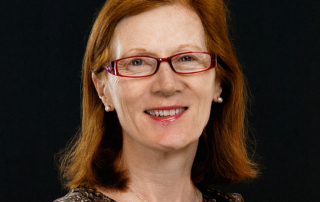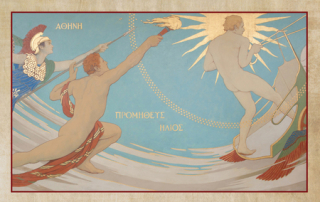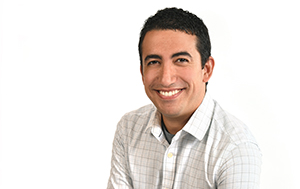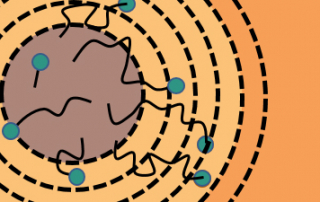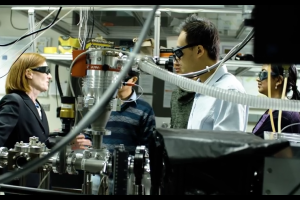About STROBE Admin
This author has not yet filled in any details.So far STROBE Admin has created 245 blog entries.
Murnane wins SFI St. Patrick’s Day Science Medal
JILA Fellow Margaret Murnane was awarded the Science Foundation Ireland’s (SFI) prestigious St. Patrick’s Day Science Medal on 14 March 2018 in Washington D.C., for her significant contribution to academia, research and industry.
Murnane’s many achievements include designing some of the fastest lasers in the world and creating table-top affordable X-ray lasers. Applications of both works advance the wider research community.
The SFI St. Patrick’s Day Science medal is awarded annually to distinguished Irish scientists, engineers, or technology leaders living and working in the US.
Murnane was born and raised in County Limerick, Ireland, before moving to the US to complete her PhD in physics at the University of California at Berkeley. She continues to play a significant role in research and the promotion of science in Ireland, in her keen and ongoing support of the Tyndall National Institute of Cork.
From the SFI website: On accepting her SFI St. Patrick’s Day Science Medal, Prof Murnane said: “My passion and love for physics first came from my father who was a teacher, and this grew when I attended University College Cork and completed my Bachelors there. Today I am proud to say that the education I started in Ireland and continue to develop in the US has allowed me to follow my interests and create technology and systems which can be used across different areas of research in both countries today. In my work with the Tyndall Institute, I have seen first-hand the fantastic research taking place in Ireland which has applications around the world. As an Irish citizen living in America, it heartens me to see the continued collaboration between the two countries to ensure the research community in both Ireland and the US can produce the very best work. Today, I am very honoured to receive the SFI St. Patrick’s Day Science Medal.”
The award was presented by Taoiseach Leo Varadkar to both Murnane and David McCourt, Founder and CEO of Granahan McCourt Capital. Read more about the award on the SFI website.
Opportunities in Intense Ultrafast Lasers: Reaching for the Brightest Light
The U.S. is losing ground in a second laser revolution of highly intense, ultrafast lasers that have broad applications in manufacturing, medicine, and national security, says a new report from the National Academies of Sciences, Engineering, and Medicine. Currently, 80 percent to 90 percent of the high-intensity laser systems are overseas, and all of the highest power research lasers currently in construction or already built are overseas as well. The report makes five recommendations that would improve the nation’s position in the field, including for the U.S. Department of Energy (DOE) to create a broad network to support science, applications, and technology of these lasers, as well as for DOE to plan for at least one large-scale, open-access high-intensity laser facility that leverages other major science infrastructures in the DOE complex.
NSF, which has supported national centers of excellence, such as the Center for Ultrafast Optical Science at the University of Michigan (1991-2002),52 appears to no longer be directly involved in the development of high-powered or high-intensity lasers, except for some spin-off applications such as the new NSF STROBE Science and Technology Center at University of Colorado.
Semiconductor nanosensor measures membrane potential
Researchers in the US have developed nanosensors that can be directly inserted into a cell’s lipid membrane and be used to measure membrane potential. The devices, which are based on inorganic semiconductor nanoparticles, could potentially record action potentials from multiple neurons as well as electrical signals on the nanoscale – for example, across just one synapse.
Image Courtesy: Y Kuo and S Sasaki / University of California, Los Angeles
Semiconductor nanosensor measures membrane potential
Professor Shimon Weiss leads team to develop nanosensors that can be directly inserted into a cell’s lipid membrane and be used to measure membrane potential.
The devices, which are based on inorganic semiconductor nanoparticles, could potentially record action potentials from multiple neurons as well as electrical signals on the nanoscale – for example, across just one synapse. Their paper, “Membrane insertion of—and membrane potential sensing by—semiconductor voltage nanosensors: Feasibility demonstration” was published in the January, 12, 2018 issue of Science Advances.
Strategies for Effective Mentoring
The purpose of this workshop is to assist graduate students and other STROBE participants in working effectively within the context of mentoring relatinoships with faculty, graduate students, and udnergraduates. Participants will learn about the importance of mentoring both to mentors and mentees, how to initiate mentoring relationships and keep them on track, and how to address problems that may arise.
Congrats to Franklin Dollar on Being Selected as an IOP Outstanding Reviewer by the New Journal of Physics
IOP is proud to recognize excellence in reviewing, and each year our journal editorial teams select the best reviewers of the year based on the quality, quantity and timeliness of their reviews.
Each journal chooses one person to receive the Reviewer of the Year Award, and selects a number of other excellent reviewers to receive Outstanding Reviewer awards.
Tracking Energy Flow in Light-harvesting Systems on Native Nanometer and Picosecond Scales
So Ginsberg and her colleagues devised a measurement that transforms an optical “super-resolution” microscopy known as STED (stimulated emission depletion) into a tracker of excitons on these short scales in an organic semiconductor. The technique makes it possible, for the first time, to relate the characteristics of exciton migration efficiency to nanoscale structures within light harvesting materials. “We ended up using the spatial profile of light pulses and the way that they interact with the material in order to excite very small and localized regions that have very sharp boundaries,” she said.
APS TV Features STROBE at JILA
STROBE is featured in an APS TV video about what makes JILA a unique and great place to work. JILA is a unique research and training partnership between the University of Colorado and the National Institute of Standards & Technology. At JILA, scientists develop new research and measurement technologies that broadly advance science and the NIST measurement mission. To date, JILA scientists have been awarded three Physics Nobel Prizes. JILA also trains young innovators who become leaders in industry, academia, and government labs. And after traveling to the many laboratories housed at JILA, APS TV discovers that collaboration amongst its researchers is one of its greatest strengths.
Publishing Chemistry and Materials Research in Nature: An Editor’s Perspective
Dr. Claire Hansell provides an overview of publishing in chemistry and materials science from her perspective as an editor at Nature. The time between manuscript submission and the binary outcomes of acceptance or rejection can often seem like a black box of intrigue, witchcraft, denial, confusion and much more. However, that is not the intended external face of peer review, and editors make judgements on what is best for any given manuscript every day based on just a few rational principles. Claire Hansell is a senior editor at Nature, previously at Nature Chemistry, and her talk will (hopefully) enlighten as to what goes on at an editor’s desk, with a specic focus on what editors at Nature are looking for in submissions.

